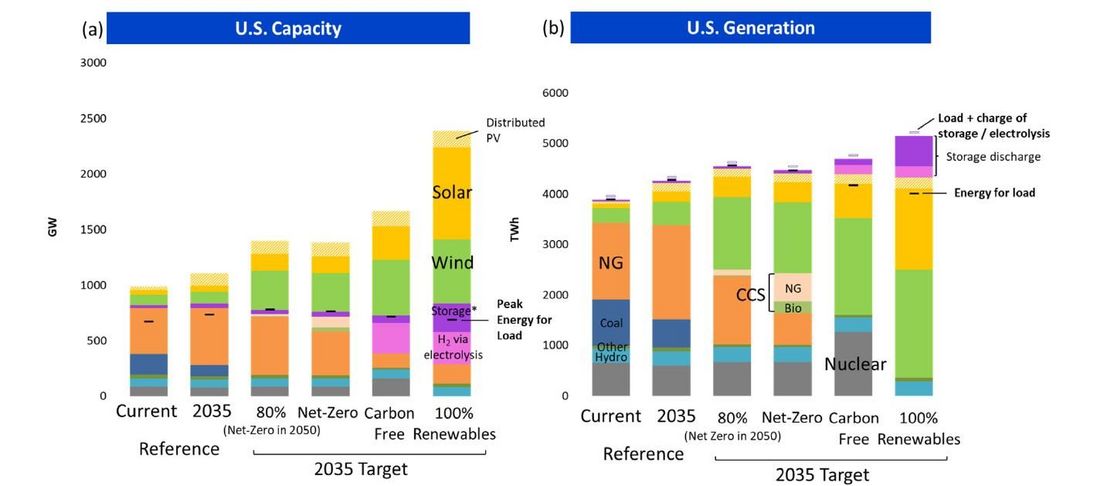Leading sustainable decarbonization across the economy
Global carbon dioxide (CO2) emissions declined more in 2020 than in any year since World War II. Driven primarily by the economic recession resulting from the COVID-19 pandemic, last year’s 6% (1) reduction is expected to largely reverse course as shuttered economies reopen. A notable exception to this global trend is the electric sector, which is expected to build upon 2020’s emission reduction progress thanks to a combination of market and policy forces and decarbonization commitments.


President and CEO of the Electric Power Research Institute (EPRI)
As different countries employ different strategies to achieve similar carbon reduction goals, the core technologies remain the same: energy efficiency, clean electricity, electrification, low-carbon fuels, and negative-emission technologies. In developed economies, the importance of efficiency and a cleaner grid for sustaining decarbonization have been evident for some time. In the U.S., for example, electric sector emissions dropped one-third over the 15 years prior to the pandemic. Efficiency gains helped keep electricity demand flat as the economy doubled. At the same time, technology advancement and policy changes drove the shift from coal generation to lower-emission natural gas, solar, and wind. Coal generation declined more than 50% as renewables grew tenfold. During the same period, nuclear power maintained its contribution to the generation mix at about 20%.
The pandemic did not alter these electric sector decarbonization trends. The U.S. installed record amounts of wind and solar capacity, while coal generation declined even further.
Globally, 2020 was also an important year for decarbonization both in terms of societal commitment and technological progress. Nations comprising around 70% of global emissions have stated commitments to achieve net-zero emissions by around mid-century, and hundreds of corporations have announced similar commitments. On the technology front, the cost of solar, wind, and battery technologies continued to decrease, with renewables increasing from 27% to 29% of the global electricity supply, the largest increase on record. There are also signs of accelerated electrification – a critical contributor to decarbonization. For example, sales of electric vehicles increased 40% and investments in low-carbon fuels, such as clean hydrogen, grew exponentially.
This progress is commendable but achieving the ambitious goals before us requires innovative solutions, industry-level alignment, and a resolute commitment to a net-zero future.
The path toward net-zero emissions parallels the journey to meet other critical societal goals. Industry leaders can create a resilient energy future that is affordable and accessible for all. A recent EPRI report, Powering Decarbonization: Strategies for Net-Zero CO2 Emissions, (2) uses the U.S. as a case study to explore a variety of technology strategies that can be used to achieve net-zero emissions. It explores the timing of the electric sector target, 2035 versus 2050, the role of technology advances in controlling costs, and the implications of electric sector reductions for economy-wide reductions.
Specifically, the report compares three power sector decarbonization strategies:
- Net Zero: Fossil fuels are permitted with CO2 capture technologies
- Carbon Free: Only carbon-free technologies, including nuclear, are permitted
- 100% Renewables: Only carbon-free, renewable resources are permitted
The analysis reveals several important insights. First and foremost, the cost of a decarbonization strategy is directly dependent on the time frame and technologies. Longer transitions and those with greater technology options, enable a lower-cost net-zero outcome.
Consider that solar and wind are the leading sources of generation in all net-zero scenarios (Figure 1). Substantial new transmission investments are essential to connect these resources and serve distant load centers. Additional renewables deployment also requires more flexible resources to facilitate reliable grid integration.

Figure 1 - Electricity generation and capacity by technology for different carbon target definitions
Beyond renewables, a reliable and affordable net-zero energy future requires clean, firm generating capacity. Nuclear and hydroelectric facilities supply a large portion of existing U.S. capacity. Each carbon reduction scenario results in a different mix of technologies to supplement existing firm resources: carbon capture and storage (CCS) in the Net-Zero scenario, advanced nuclear in the Carbon-Free scenario, and green hydrogen turbines in the 100% Renewables scenario. CCS, advanced nuclear and hydrogen/electrolysis are all emerging technologies today, and each could play an important role in getting the electric sector to zero emissions.
The cost of achieving net zero for different regions of the U.S. varies based on the timing of the target and the range of technologies. Achieving zero emissions is significantly more expensive in regions with lesser renewable resource potential and with limits on clean, firm generating technologies. While more interregional transmission can lessen the disparities across regions and lower the overall cost of decarbonization, it cannot eliminate them altogether.
There is tremendous potential to decarbonize the power sector. But significant progress in energy efficiency, clean electricity, and electrification are only projected to reduce economy-wide emissions by around 80% by 2050 (Figure 2). Achieving the last 20% requires developing different solutions.

Figure 2. Efficiency, electric sector decarbonization, and electrification dramatically reduce economy-wide emissions, but do not achieve net-zero
It is in this spirit that EPRI and Gas Technology Institute (GTI) launched the Low-Carbon Resources Initiative (LCRI). The organizations are collaborating across the industry to identify, research, develop and demonstrate the technologies needed to close the gap to zero. Through the LCRI, EPRI and GTI are actively working on projects and research aimed at accelerating the deployment of hydrogen and other energy carriers that hold promise for reducing emissions in hard-to-decarbonize sectors.
Global decarbonization is both ambitious and achievable. Driving sustainable progress means strengthening resilience and preserving affordability throughout the transition. Delivering on these societal imperatives will require broad collaboration, aggressive research, and a steady reliance on objective and neutral knowledge.
References
- Wilson, Tom - IEA, Global Energy Review: CO2 Emissions in 2020, March 2021
- Leljedal, Timothy - Powering Decarbonization: Strategies for Net-Zero CO2 Emissions is an economic analysis and does not explore operational constraints, such as reliability.
Banner & Thumbnail credit: Photo by Science in HD on Unsplash

